How To Report ERC (Employee Retention Credit) On Tax Return 1120s?
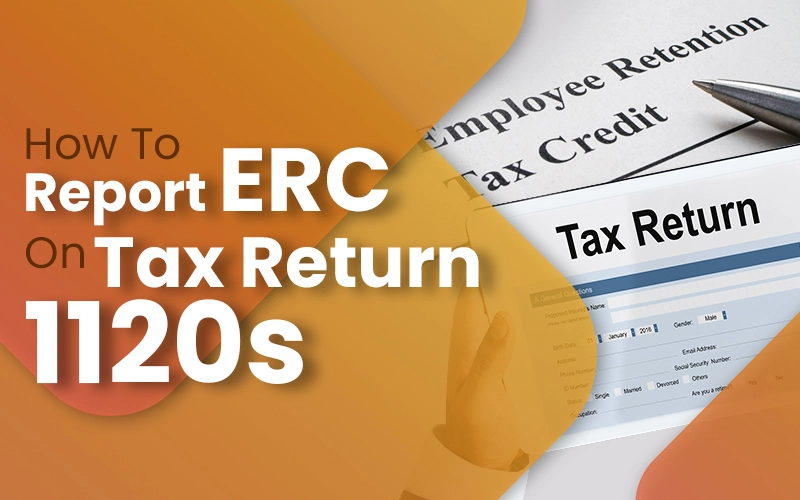
Are you a small business owner wondering how to navigate the complexities of reporting the Employee Retention Credit (ERC) on your tax return 1120S? You’re not alone! Understanding the ins and outs of ERC can be daunting.
But don’t you worry! We’re here to guide you through it step by step. In this comprehensive blog post, we’ll cover everything you need to know about how to report ERC on tax return 1120S, from eligibility requirements to calculation methods and reporting procedures.
What Is Employee Retention Credit (ERC) All About?
Before we dive into the nitty-gritty of reporting ERC on your tax return 1120S, let’s make sure we’re all on the same page about what ERC is.
The Employee Retention Credit is a refundable tax credit introduced to help businesses retain employees during the COVID-19 pandemic. It’s designed to provide financial relief to eligible employers who experienced economic hardship due to the pandemic.
Eligibility Criteria
To qualify for the ERC, your business must meet certain eligibility criteria. These include the following-
- Experiencing a significant decline in gross receipts compared to a prior period.
- Being subject to a full or partial suspension of operations due to government orders related to COVID-19.
- Having fewer than 500 full-time employees (for 2021, certain modifications apply).
If your business meets these criteria, you may be eligible to claim the ERC.
Calculating the ERC
The next step in reporting ERC on your tax return 1120S is calculating the amount of credit you’re entitled to. The ERC is calculated differently depending on the period-
For 2020– The credit is equal to 50% of qualified wages paid to employees, up to $10,000 per employee for the entire year.
For 2021 and beyond– The credit amount has been increased to 70% of qualified wages, and the maximum creditable wages per employee per quarter have been increased to $10,000.
It’s important to note that the ERC is claimed every quarter, so you’ll need to calculate the credit separately for each quarter in which you’re eligible.
Reporting ERC on Tax Return 1120S
Now, let’s get to the heart of the matter: how to report ERC on your tax return 1120S. Here’s a step-by-step guide:
Complete Form 941– Before reporting ERC on your tax return 1120S, you’ll need to report it on Form 941, Employer’s Quarterly Federal Tax Return. Make sure to accurately calculate the credit for each quarter and include it on Line 11c of Form 941.
Include on Schedule K-1– Once you’ve reported the ERC on Form 941, you’ll need to include it on Schedule K-1 (Form 1120S), Shareholder’s Share of Income, Deductions, Credits, etc. This ensures that the credit is properly allocated to the shareholders of the S corporation.
Report on Form 1120S– Finally, when filing your tax return 1120S, make sure to include the total amount of ERC claimed for the year on the appropriate line of the form. This will ensure that the credit is reflected in your overall tax liability for the year.
Wrapping It Up
In summary, reporting ERC on your tax return 1120S may seem daunting at first, but with a little bit of guidance, it’s entirely manageable. By following the steps outlined in this blog post, you can ensure that you’re accurately reporting the credit and maximizing your tax savings.
Quick Note: Remember, understanding how to report ERC on tax return 1120S is crucial for maximizing your tax savings and ensuring compliance with IRS regulations. By following these steps, you can navigate the process with confidence and ease.
So there you have it. Our comprehensive guide on how to report ERC on tax return 1120S. We hope you found this information helpful, and if you have any further questions, don’t hesitate to contact a tax professional for assistance. Happy reporting!
Also Read: Maximize Your Tax Refund in 2024
When Can You Start Filing Taxes 2024?

Tax season starts January 29, 2024, and the federal tax return date is April 15, 2024, but it does not apply to everyone. There are various important dates for you to remember. Below, we will look into this tax season and tell you the deadline for filing and paying your taxes.
The IRS set the tax filing date, which is Jan 29. So, the agency will start accepting and processing your tax returns on the same day if you want to file yours early. If you want an early kickstart, you can enter all the information you have and submit your tax paperwork to a professional before the date.
If you are an employer, you must check your mailbox regularly. You should send your employees their W-2 and 1099 income tax forms before January ends.
When is the Deadline for Filing the 2023 Tax Return with the IRS?
Monday, April 15, 2024, is the deadline to file federal tax returns. You can get an extension from the IRS in case of a catastrophic event. Those serving abroad in the military also can get additional time to file.
What is the Deadline to File for a Tax Extention for Tax Returns 2024?
The deadline for filing a tax extension with the IRS is the same as that for filing tax returns. An extension does not change the payment deadline but gives you a few months extra (until October) to finish your paperwork. Then, you must file any owed amount on time to avoid late penalties.
Which States Have Later Tax Return Deadlines?
Some states do not collect income taxes. They are Alaska, Nevada, South Dakota, Florida, Tennessee, New Hampshire, Washington, Texas, and Wyoming. Other states do and adhere to the federal filing deadline of April 15. However, states like Virginia, Louisiana, Iowa, and Delaware are a few exceptions.
Other state residents with federal filing extensions should file their state returns by April 15, 2024. Taxpayers can request an automatic extension but must still make outstanding payments by the deadline.
When Can You Get Your Refund?
According to the IRS, taxpayers electronically filing their returns are due their refund within 21 days. It only applies to them if they opt for direct deposit and their tax returns have no issue.
According to the law, the IRS should issue refunds to taxpayers who claimed the earned income tax credit or additional child tax credit in mid-February. As per the agency, they should receive these payments by February 27, 2024.
If you need any further help or have any queries regarding tax filing in Los Angeles, contact Jarrar CPA & Associates ASAP!
FAQ
When do tax returns come in 2024?
The deadline to file your 2023 income tax return is April 15, 2024. However, Massachusetts and Maine are exceptions; their deadline is April 17. It is the federal due date; state taxes may have a different deadline.
When is the last day of tax return in 2024?
April 15 is the last day of the tax return, but you can request an extension and get until October 15 to file your taxes.
When do I get a tax refund?
You owe the IRS money if you miss the tax deadline and must pay penalties and interest. However, it is different if you miss it and the IRS owes you a refund. While there is no penalty, ensure filing your 2023 taxes by April 2027.
What Should You Know Before Signing A W-9 Form?
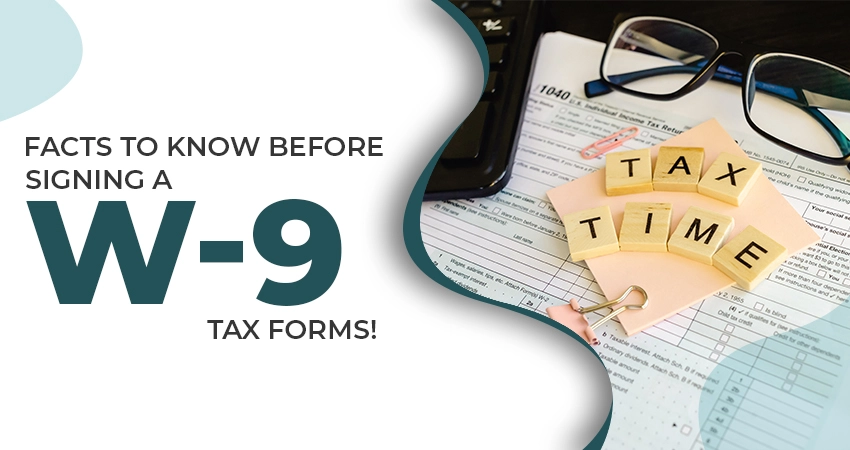
Form W-9 is one of the simple IRS Forms that has just one function: it allows you to send a Tax Identification Number (TIN) that is employer identification number (EIN) or the social security number (SSN) to another bank, person, or other financial institution.
W 9 California is an information return, meaning it is just for giving someone else a piece of information they need. But as you are not sending it to the IRS, you should be careful about who exactly to send it to. Want to know what is a W9 tax form? Read on.
Schedule A Consultation Today!
What is A W-9 Form For Business And What’s Its Purpose?

Form W-9 is a tax document that the independent contractor’s sign to provide a taxpayer ID number. If the employer doesn’t have a taxpayer ID, or if the taxpayer ID is incorrect, the independent contractor should have federal income taxes withheld, as backup withholding.
Form W-9 is a standard tax document often utilized in business and finance transactions. So, by itself, a W-9 doesn’t pose problems. Still, there are some issues you must be aware of.
Where Do I Get A W-9 Form?

Your client, bank, or other financial institution have to send a W 9 themselves if they need to fill it out. Usually, if you want to file one, it is on its way. Download a PDF version of it on the IRS website.
 |

Want To Know More About W-9 Form? |
When Not To Send Someone A W-9?
If You Get It From Someone You Don’t Know
If you are a contractor and you get a W-9 from a business or individual who isn’t a client, don’t fill this out. Sending your Social Security Number or SSN and other personal information to a stranger must be dangerous.
Scammers will sometimes send individuals W-9s to collect the SSNs. If you are suspicious about W-9 that someone has sent, ask them which tax forms they plan to send you back after filling it.
If you don’t know how to fill out a w 9 form for an individual. Consult a tax CPA, consult a tax CPA for assistance. Remember the only reason anyone would need a W-9 from you is that they need it to send some type of IRS form.
When You Employer Sends You One
Employers shouldn’t ask you for a W-9. The appropriate form for them is W-4. If you are starting a full-time job, and your employer gives you a W-9 instead of a W-4, it means they have hired you as an independent contractor and not an employee. Now, it can be a hook for tax payments to the IRS.
When To Send W-9 Form?

If someone is asking for a W 9 California, they need it to send you to form 1099, which you will need to report some kinds of income to the IRS.
It is in both your interest to get the forms in as soon as possible. Even though there isn’t any official deadline for filing a W-9, you must fill it out as soon as you get one.
Remember: if you fail to send someone a W-9 or send one with the wrong information, you may be subject to a penalty.
Contact Us Today:
Locations:
Tax Saving Tips New Start – Ups Often Miss Out On

In today’s scenario where doing business has become stringent due to the mandatory requirement of complying with multiple and complex laws, taxation law is something you should outsource to an expert.
Taxation laws not only in the US but all over the world are complex and not everyone’s cup of tea. As a small business or start-up owner, you have income from almost every head except for the head of “income from salaries”.
If you are not aware of tax saving options, you might end up paying a significant amount of taxes to the government every year.
What you must know is that every penny counts when you are running a small business. Minimizing taxes may be the difference between a profitable business and one that is just scraping by.
Schedule A Consultation Today!
Here are seven small business tax tips you can use to tame the stress of small business taxes and hopefully put a little more money back into the pocket. It’s not what you make, but what you keep.
1. Using Tax Filing Software

While this recommendation may be a no-brainer for the small business owner interested in avoiding headache, it’s applicable to even the tax-savviest entrepreneurs, it offers protection a small business owner may not be able to afford otherwise.
When wondering how to do taxes for small business, you must use tax software. Also, hiring an experienced CPA can help you a lot. These platforms help you prepare and file your tax return online while backing up that filing with accuracy and maximum refund guarantees.
Having a shield that ensures the accuracy of your return – and guaranteed reimbursement of any fees or penalties you’ve been charged- makes tax hurdle easier.
Schedule A Consultation Today!
2. Keep An Eye On All Receipts

One of the other best tax strategies for small business is to keep a close eye on all your receipts.
Receipts create the financial dashboard of how you spent your money throughout the year. Many of those receipts are for goods and services that can be deducted on your taxes, offsetting taxable income.
Depending on your business structure, there are specific deductions you can take for certain structures, plus deductions that apply across all structures.
Of course, keeping receipts for an entire year is a hassle; many pieces of paper may get misplaced or tossed.
However, using apps can change that by storing, capturing and organizing all your receipts in one place. You’ll be able to import receipts from photos and forward email invoices from the inbox.
Using such apps will ensure you obtain proof of, and retain that proof, for every expense deduction owed you.
3. Pay For The Retirement Now And Get Payoff Later

A self-employed worker’s taxable income can be reduced by putting additional money toward a traditional retirement account- the money isn’t taxed until the funds are withdrawn in retirement.
Small business owners under 50 can contribute up to $5,500 per taxpayer to a traditional or Roth IRA; those over 50 can put up to $6,500 toward their retirement savings.
Your financial advisor can pinpoint the amount that makes the most sense for your cash flow, but this is a tax move that pays off both now and later. It is one of the essential tax tips for small business owners that you must follow.
4. Deduct Home Office Expenses

Many small business owners operate from offices at home, but not all of them realize they can deduct expenses related to the home office. These can include insurance, mortgage interest payments, repairs and utilities such as internet service.
You do, of course, have to determine what portion of your home is dedicated to running your business (tax software does the mathematical calculation for you), but this deduction can benefit both homeowners and renters.
Schedule A Consultation Today!
5. Deduct Car Expenses
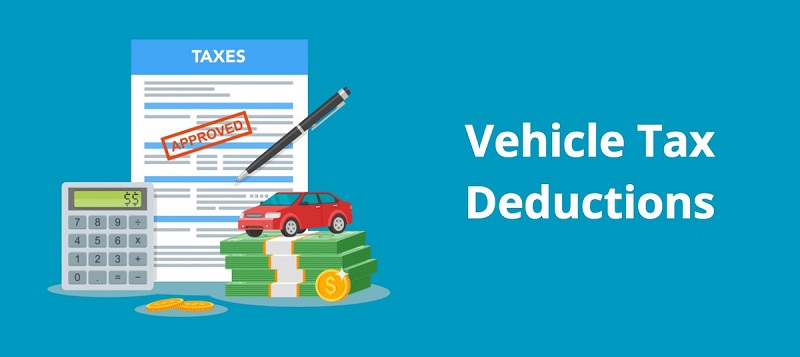
The trick here, again, when you’re deducting expenses, is to calculate what percentage of the time your car is getting used for. From there, you can apply that percentage to the overall car expenses.
For this category of deduction, two types are available: IRS’s standard mileage rate or your actual car expenses (including insurance, gas, repairs).
Figure out which one makes the most financial sense before filing so you can maximize your savings.
6. Take Advantage Of Penalty Relief If You’re Eligible

This is an important small business tax tips that everyone should consider.
Despite following these steps and/or the recommendations your accountant makes, you may incur an IRS penalty. If that happens, you need to determine whether you’re eligible for penalty relief.
Some penalties such as penalties for failing to file a tax return or to pay on time are eligible for penalty relief.
People who can be considered for relief include those who tried to follow the legal requirements but were unable to meet them due to circumstances beyond control.
You don’t need to make small business owners more financially draining than it already is.
By carefully accounting for deductions throughout the year and investigating your options in tricky situations, you’ll find alternatives you didn’t know existed — and savings you can use.
Contact Us Today:
Locations:
Married Filing Jointly Vs Separately – How To Choose The Filing Status
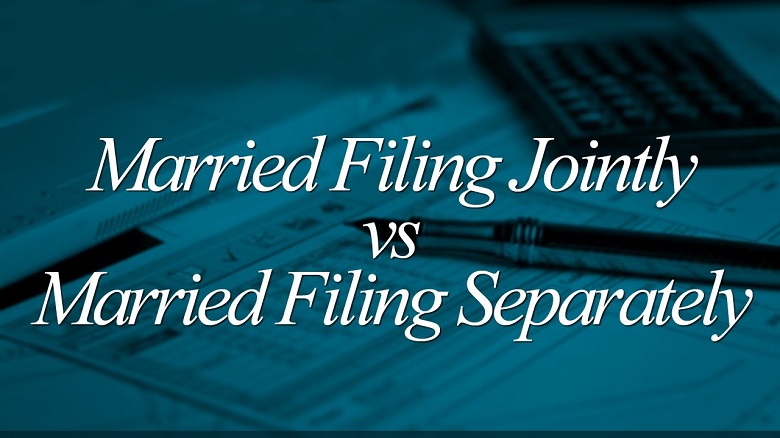
Certain life happenings, such as getting married, will prompt you to change the tax filing status.
While it may initially feel like a chore, it’s a straightforward process. Depending on your circumstances, married filing jointly or separately can save you money in the coming tax season.
Your filing status determines important factors such as tax rates and standard deduction, which is the amount of income that’s not subject to federal income tax.
Therefore, having the right filing status can help you get the biggest refund.
Changing your status is simple. All you have to do is alter your filing status when you submit your tax return. If you’d like to make changes to the amount of tax you’re withholding per paycheck, you can submit a new W-4 to your employers.
What you need to know is that you can do this throughout the year, not just when you file taxes. Before making the change, you must first determine your eligibility for the various filing statuses. For married persons with a living spouse, there are two ways to file:
Schedule A Consultation Today!
- Married filing jointly (MFJ): To file jointly means you file a single return, which will include the income and deductions for both spouses.
- Married filing separately (MFS): taxes married filing separately means each person files their own return, keeping incomes and deductions separate.
Here’s what experts have to say about filing jointly versus separately, plus advice on how to decide what’s right for you.
The Benefits Of Changing Your Status To Married Filing Jointly
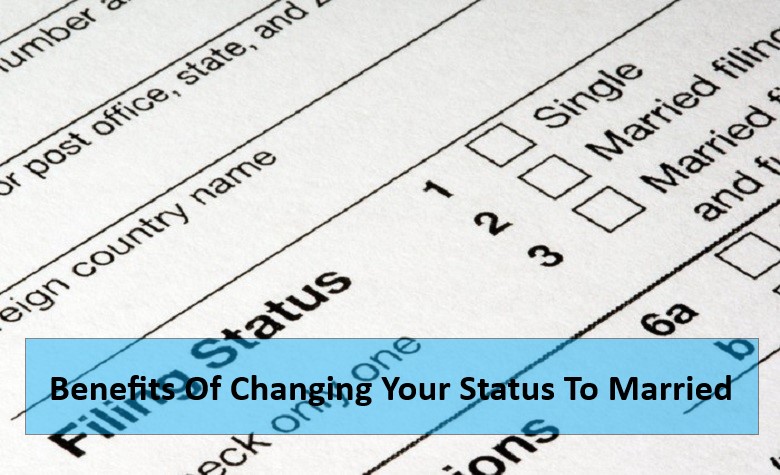
Filing joint typically provides married couples with the most tax breaks. Tax brackets for 2020 show that married couples filing jointly are only taxed 10% on their first $19,750 of taxable income, compared to those who file separately who only receive this 10% rate on taxable income up to $9,875.
Additionally, the IRS offers spouses who file jointly one of the biggest standard deductions each year. In 2019, the standard deduction for a married pair jointly is $24,400.
Conversely, for those filing separately, the tax break is just $12,200, which is the same as for single people.
Another reason to consider filing jointly vs separately is that joint filers are often eligible to receive meaningful savings in the form of tax credits, such as:
- The Earned Income Tax Credit (EITC) which is designed to ‘benefit for working people with low to moderate-income’. Here’s how to know if you and your spouse qualify, as per the IRS.
- Reimbursement or refund for adoption expenses when legally adopting a child.
- The Child and Development Care Tax Credit, which can help offset your child-care costs if you are working and must pay a caregiver to look after your child or a disabled spouse.
As long as you were married by December 31, 2019, you are eligible to file taxes jointly.
Schedule A Consultation Today!
What’s The Advantage Of Filing Separately?
While it’s almost better to file jointly because of a lower tax responsibility overall, there are very specific situations when it pays to submit separate returns.
Are you thinking can married couples file taxes separately at all?
Here are four situations where filing separately would be the best option:
You or your spouse have high or unpaid student loan debt
If one of you have defaulted on your student loans, meaning you haven’t paid on them in 270 days or more, you should consider filing separately.
That’s because, in this case, your joint tax refund could end up being rerouted through the Treasury Offset Program and put toward the unpaid debt, meaning neither of you would get a refund.
However, if you had failed separately, at least one of you would have a refund.
If you have federal student loans and are on an income-driven plan, meaning the amount you pay on your loans each month is based on your salary, it might make sense to consider filing separately from your spouse.
That way, their income is not considered in the repayment calculation.
One of you has excessive medical bills

When you or your partner get sick, you can generally deduct your medical expenses above a threshold of your income.
In 2019, the IRS allows taxpayers to deduct qualified unreimbursed medical care expenses for the year that exceed 7.5% of your adjusted gross income (AGI).
If both you and your spouse earn an income and you file jointly, your medical expenses would have to be higher in order to be able to make any deductions.
But when confused between married filing jointly vs separately, in this case, going separate is the best option. Your tax return reflects just one or your salaries- you will reach the threshold faster and be able to deduct more of those expenses earlier on.
If you would save more on taxes by filing separately
To find out which status would benefit you the most, you can run a side-by-side comparison-or have your tax preparer run it for you- with the outcomes of each filing status.
You are allowed to choose the status that most benefits you, and you can choose a different status each year by making the same assessment each time.
If you’re still unsure of which status makes the most sense for you, you should consider getting advice from a qualified CPA.
You need a proper understanding of what you should do or whether you should change the status since there are variables in the decision.
Contact Us Today:
Locations:




